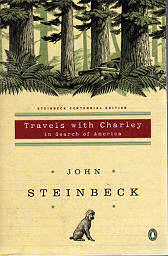We returned from our first major foray to eastern Wisconsin late last week, just ahead of one of the year’s seemingly incessant bouts of nasty weather. Green Bay (within sight of Lambeau Field) was our home base; from there, we roamed east, west and south as needed.
Our most rustic foray brought us to the tiny town of Zittau, where we met master cheesemaker David Metzig. Despite having a chic and credible Web presence, Metzig operates in a manner best described as old school — cheese plant downstairs, antique-bedecked living quarters upstairs. There’s a sense of intimacy to an operation like this; the storefront, cold storage, vats, and home are all there under one modestly sized roof.

Metzig was as charming and funny as anyone we’ve talked to; there may be a comfort level associated with being interviewed in your own dining room.
On our way out, David snapped a terrific shot of Becca and I wearing official Zittau Institute of Moo-Juice souvenir hats.

The bulk of our Green Bay-area time was spent at a much larger operation, that of Trega Foods. Trega’s cheesemaking operation encompasses three plants — one in Weyauwega overseen by Daniel Stearns (cheddar) and Jim Demeter (feta), one in Little Chute overseen by Terry Lensmire (cheddar, monterey jack, mozzarella and provolone), and one in Luxemburg overseen by Roger Krohn (mozzarella, provolone).
The contrast in scale between Metzig’s little in-house operation and, for example, Stearns’s 250,000 pound per day cheddar making set up couldn’t be more dramatic.

Metzig’s set-up is small, almost intimate; the screens for cutting the whey are pulled by hand, and the daily output is around 1,000 pounds. At the Weyauwega plant, massive 640-pound wooden crates of cheddar are pulled along a sprawling line, manhandled by robots that would look at home on a Detroit auto line.

Despite the sheer size of the Trega operation (which was recently sold to a Canadian concern called Agropur), the cheesemakers we met with couldn’t be nicer or more informative; while I wouldn’t describe myself as a cheese expert at the end of this trip, the sheer repetition of detail and physical experience of being in 13 different plants is beginning to make an impact. There’s no question that the Trega guys know their cheese, and there’s something awe-inspiring about seeing it made on such a massive (or, to use their accurate terminolgy, “medium-sized”) scale.
Duane Peterson, a master cheesemaker at the mostly edam and gouda-centered Arla Foods plant, gave us another look at large-scale production. His plant is European-owned operation and hearing about the difference between American and Continental management styles (often individualistic to the point of disorganized versus hierarchal and position-description-driven) was fascinating… as was the sprawling and beautiful array of machinery used to keep the plant in motion.


Overall, the Green Bay area was a little more developed (and developing) than the Euro-cute countryside of Green County, but we certainly can’t complain about the cheese or the locals.

Read Full Post »
 We’re doing a lot of driving to research this book, and it’s really driven home just how much nicer it can be to tool around on county highways and country roads. There’s just something soulful about seeing where people live, rather than just hurtling at 71 miles per hour down a fast-food studded artery of commerce. In “Travels With Charlie,” John Steinbeck offered his perspective on the coming of the interstates:
We’re doing a lot of driving to research this book, and it’s really driven home just how much nicer it can be to tool around on county highways and country roads. There’s just something soulful about seeing where people live, rather than just hurtling at 71 miles per hour down a fast-food studded artery of commerce. In “Travels With Charlie,” John Steinbeck offered his perspective on the coming of the interstates:











